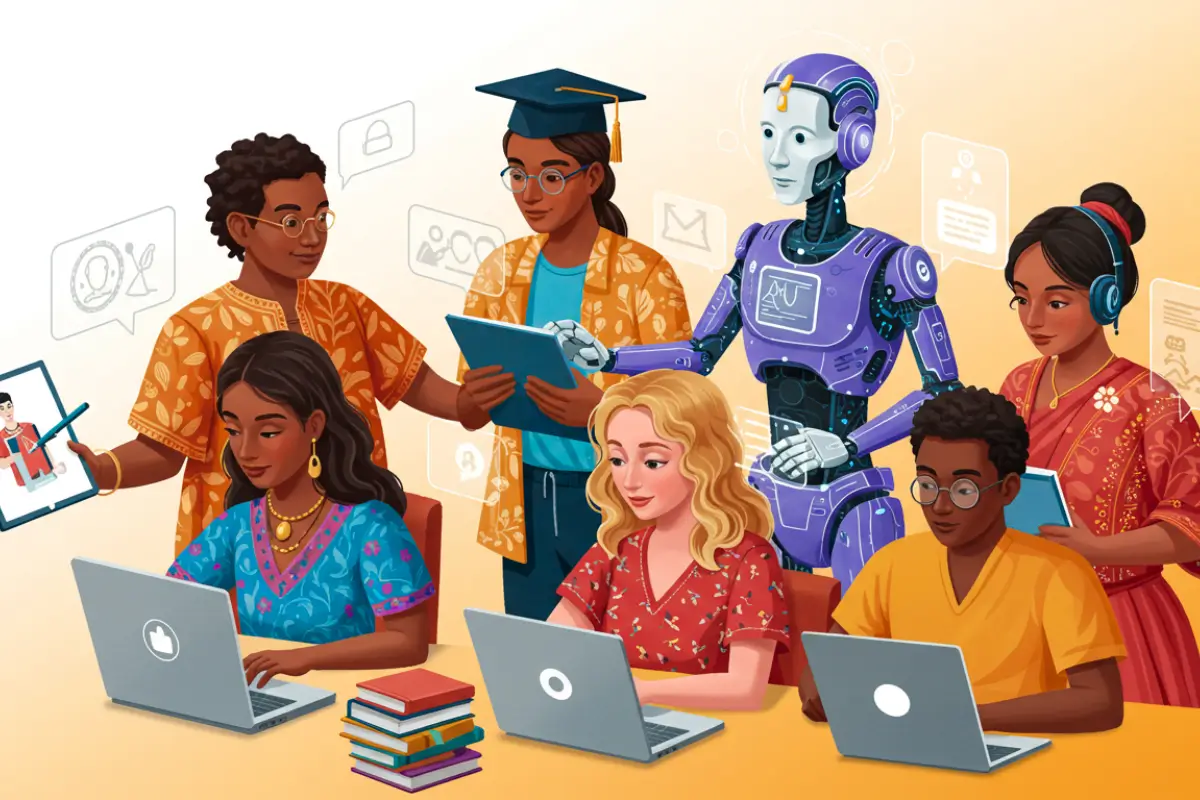The Future of Online Courses: Will AI Be Your Next Teacher?
- April 20, 2025
- 0
Today I woke up and went to do my basic routine, grab my breakfast and open the Duolingo app to practice, and the funny thing is that I
Today I woke up and went to do my basic routine, grab my breakfast and open the Duolingo app to practice, and the funny thing is that I

Today I woke up and went to do my basic routine, grab my breakfast and open the Duolingo app to practice, and the funny thing is that I was thinking, will the AI itself one day create the courses that you use?
With the rapid advancement of artificial intelligence, the way we learn is being transformed like never before. And in this article, we’re going to explore every corner of this transformation. 🤖📚
In a world where flexibility and personalization matter more than ever, traditional education models are being challenged by smarter, interactive online learning platforms. AI is at the heart of this shift, and the question is no longer if AI will become your teacher—but when and how.
In this article, I’ll walk you through the major changes AI is bringing to online education, the pros and cons of AI-powered learning, how real platforms are already doing it, and where this trend could take us by 2030 and beyond.

For decades, online courses were just recorded videos and downloadable PDFs. Now, with AI-powered platforms like ChatGPT, Google Gemini, and even virtual avatars, education is evolving into something smarter, more intuitive, and truly student-centered.
AI has the potential to:
Let’s break this down further.
Traditional classrooms often follow a one-size-fits-all approach. But let’s be real: everyone learns differently. AI flips this model upside down by analyzing student behavior, performance, and engagement to create custom learning paths.
For example, if you struggle with algebra but ace geometry, the AI will slow down and explain algebra concepts in a new way, while letting you breeze through geometry. This adaptive learning is what makes AI so powerful in education.
Forget waiting days for test results or feedback. AI tutors like Khanmigo, Duolingo AI, or even ChatGPT can respond immediately. This boosts learning speed and keeps you motivated.
These AI tutors are designed to understand not just your answers, but your reasoning—helping you improve where it really matters. Imagine an AI saying, “You got this wrong, but here’s a video that explains it in your learning style.” That’s the future of smart tutoring.
From language acquisition with tools like Rosetta Stone AI, to coding through platforms like Replit Ghostwriter or CodeGeex (check our article on it), AI is transforming specific skills training like never before.
Here are some real examples of how AI is revolutionizing e-learning:
| Platform | Use of AI | Standout Feature |
|---|---|---|
| Khan Academy | AI tutor “Khanmigo” | Interactive, Socratic-style tutoring |
| Coursera | AI for personalized course suggestions | Adaptive course journeys |
| Duolingo | AI for pronunciation and pacing | Real-time pronunciation feedback |
| Replit | Ghostwriter AI coding assistant | Writes code suggestions in real-time |
| Udemy | AI content curation | Auto-recommendation of lessons |
These platforms are constantly improving their algorithms to make learning more efficient and enjoyable.

Let’s be honest—AI won’t fully replace human teachers, and that’s a good thing. Teaching is not just about giving information.
It’s about inspiring, motivating, and caring. While AI can assist with logic and repetition, humans bring empathy, culture, and creativity.
A future where AI and humans collaborate is the most likely scenario. AI can handle the heavy lifting—grading, adapting lessons, offering feedback—while teachers focus on interaction, storytelling, and creating that classroom magic only humans can do.
So where is this all heading?
By 2030, we may see:
In fact, some futuristic AI tools like Synthesia already allow educators to create AI avatars to teach any subject in any language.
The combination of 5G, cloud computing, and AI ethics evolution will shape this future.
If you’re curious how AI is shaping other areas like movies and language preservation, check out:

Absolutely—but with a human touch. AI will become your next teacher, or at least your next assistant in learning, offering a tailored, always-available, and increasingly intelligent experience.
But no matter how smart machines get, learning remains a deeply human journey. So let’s welcome our new AI companions—not as replacements—but as powerful partners in the pursuit of knowledge.
If you enjoyed this article, don’t forget to share it with your friends and fellow learners! 🚀 And hey—drop a comment below telling us what you’d want in your perfect AI teacher. We’d love to know! 💬